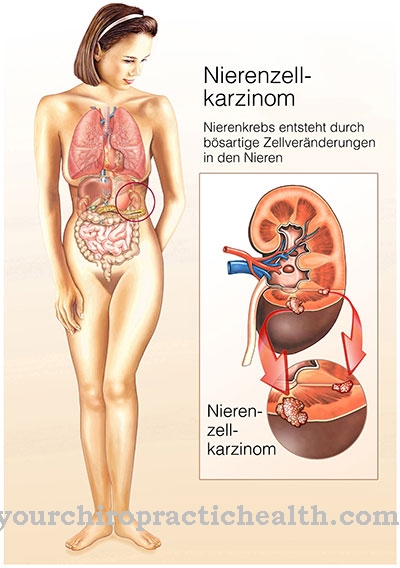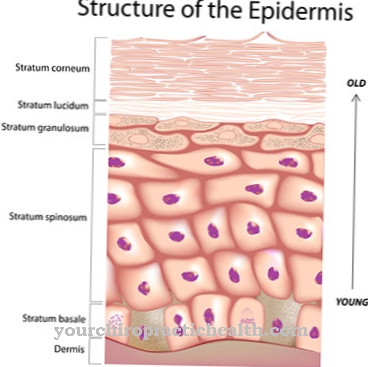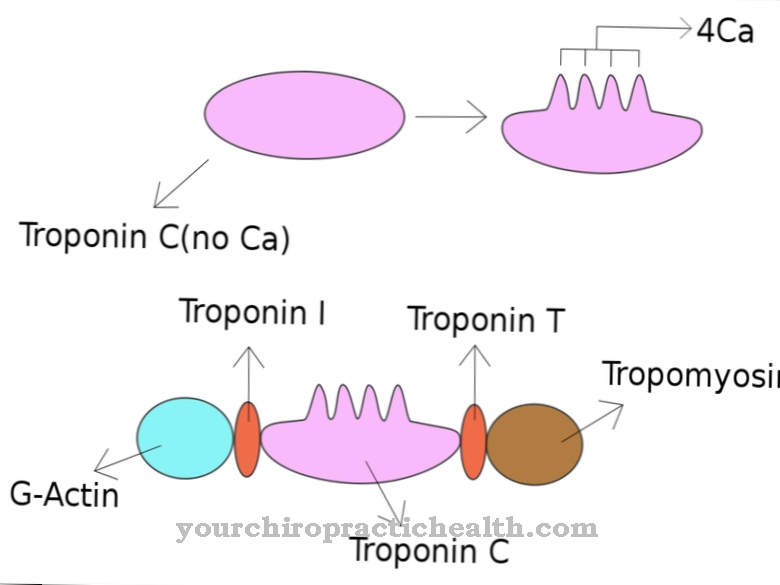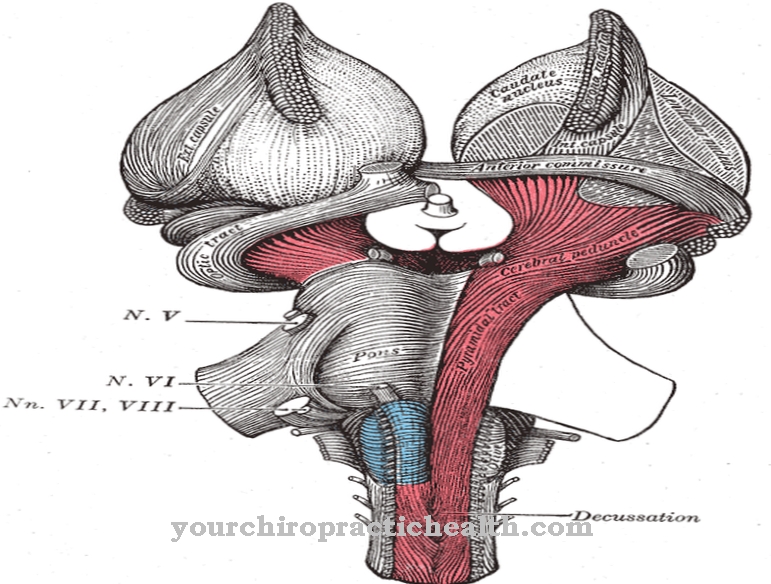The Diuresis is the excretion of urine through the kidneys. Diuresis can be accelerated therapeutically and used for detoxification. In diseases such as diabetes mellitus, the diuresis exceeds the average normal value of 1.5 liters per day.
What is diuresis

The kidneys are paired organs in the shape of a bean, the main task of which is detoxification and urination. Urine formation consists of filtration, reabsorption and concentration steps. With secretion and reabsorption in particular, the kidneys play a major role in systemic regulation.
The organs regulate the human water and electrolyte balance. They also ensure the acid-base balance of the acid-base balance.
The physician describes the urine time volume as the amount of urine that the kidneys make available in a defined time interval of 24 hours and can then be excreted (micturition). In the normal state of the kidneys, the principle of antidiuresis applies. Under these conditions, the urine volume averages between 1.5 and two liters per day. With diuresis, the urine time volume can increase many times over.
In the extended definition, diuresis refers to the excretion of urine through the kidneys. In isolated sources, the term diuresis refers to urinary excretion values that are above the average normal value of two liters. In principle, diuresis can take place therapeutically, have a pathological background or be brought about by certain diets.
Function & task
Diuresis in the sense of urinary excretion is the main task of the kidneys. Diuresis contributes significantly to the detoxification of the human body and regulates the water and electrolyte balance. The first step in urine formation corresponds to the filtration of primary urine within the kidney corpuscles. The primary urine averages 180 liters per day.
During primary urine formation, blood plasma is pressed through the inner leaf of the so-called Bowman capsule. Larger blood components do not penetrate because the blood vessel intercepts them. Counterpressure enters from the capsule space of the Bowman capsule. In addition, protein molecules create counter pressure in the blood by retaining water in the blood vessel. Due to the pressure-counter-pressure principle, the effective filtration pressure in the Bowman capsule is around eight mmHg.
After the primary urine is formed according to the pressure-counter-pressure principle, the kidneys modify the primary urine. This step takes place in the proximal tubule and involves the re-absorption of components such as electrolytes, water, glucose and residual protein into the blood. These processes reduce the volume of primary urine to an average of 19 liters per day.
In the last step of urine formation, the kidneys concentrate the urine in the so-called Henle loop and in the collecting pipes using the counter-current principle. Essentially, water is withdrawn from the primary urine during the concentration process without any additional expenditure of energy. The secondary urine emerges from the concentration process in the Henle loop. Under normal circumstances, this secondary urine averages around 1.5 liters per day.
All of the listed processes empower the kidneys to diuresis. Hormones such as adiuretin (ADH) oppose diuresis because they promote water reabsorption. At the same time, aldosterone increases sodium reabsorption.
Physical variables that affect the body also influence diuresis. The diuresis activity increases, for example, when exposed to cold or pressure. Low air pressure at altitudes of around 3000 meters also increases diuresis. The so-called cold diuresis is related to a reduced production of the hormone ADH. The human environment thus has an influence on his diuresis activity.
Diet can also affect diuresis. For example, caffeine in coffee has diuretic effects. With habitually high coffee consumption, however, the kidneys do not increase their diuresis.
You can find your medication here
➔ Medicines for bladder and urinary tract healthIllnesses & ailments
Different measures of medicine influence the diuresis from the outside. Diuretics are the best known method of increasing diuresis. These drugs are also known as diuretics and are indicated in different contexts.
In the case of various kidney and cardiovascular diseases, forcing urine excretion via diuretics can reduce the stress on the circulatory system. Therefore, diuretics are often used in heart failure.
Patients with poisoning are also given some form of forced diuresis. This type of diuresis takes place in the form of intensive medical detoxification measures. Toxic and water-soluble substances are driven out of the body by the increased urine production.
In various sources, the term diuresis is used in the context of pathologically high urine excretion from the kidneys. One pathological form of diuresis can be osmotic diuresis. This is an increased excretion of water by the kidneys, which is caused by osmotically active substances.
The concentration of urine in a healthy body is predominantly passive. Fluid is extracted from the tubular fluid by osmosis. The more osmotically active particles the liquid contains, the fewer of them can be absorbed. The increasing number of osmotically active elements reduces the osmotic gradient between tubular fluid and surrounding tissue. This reduces water reabsorption and increases the urinary time.
The doctor is familiar with osmotic diuresis from everyday clinical practice, especially in connection with diseases such as diabetes mellitus. This metabolic disorder often manifests itself through symptoms such as polyuria. In the case of polyuria, the physiological amount of urine, which is normal for age, increases daily to over 1500 milliliters per square meter of body surface.
This phenomenon is related to the glucose excess in diabetes mellitus. In view of the oversupply, the proximal tube has too little transport capacity for glucose. For this reason, osmotically active glucose particles remain in the tubule. This prevents water from being taken up again. The daily diuresis of the patient rises above the normal value.












.jpg)















